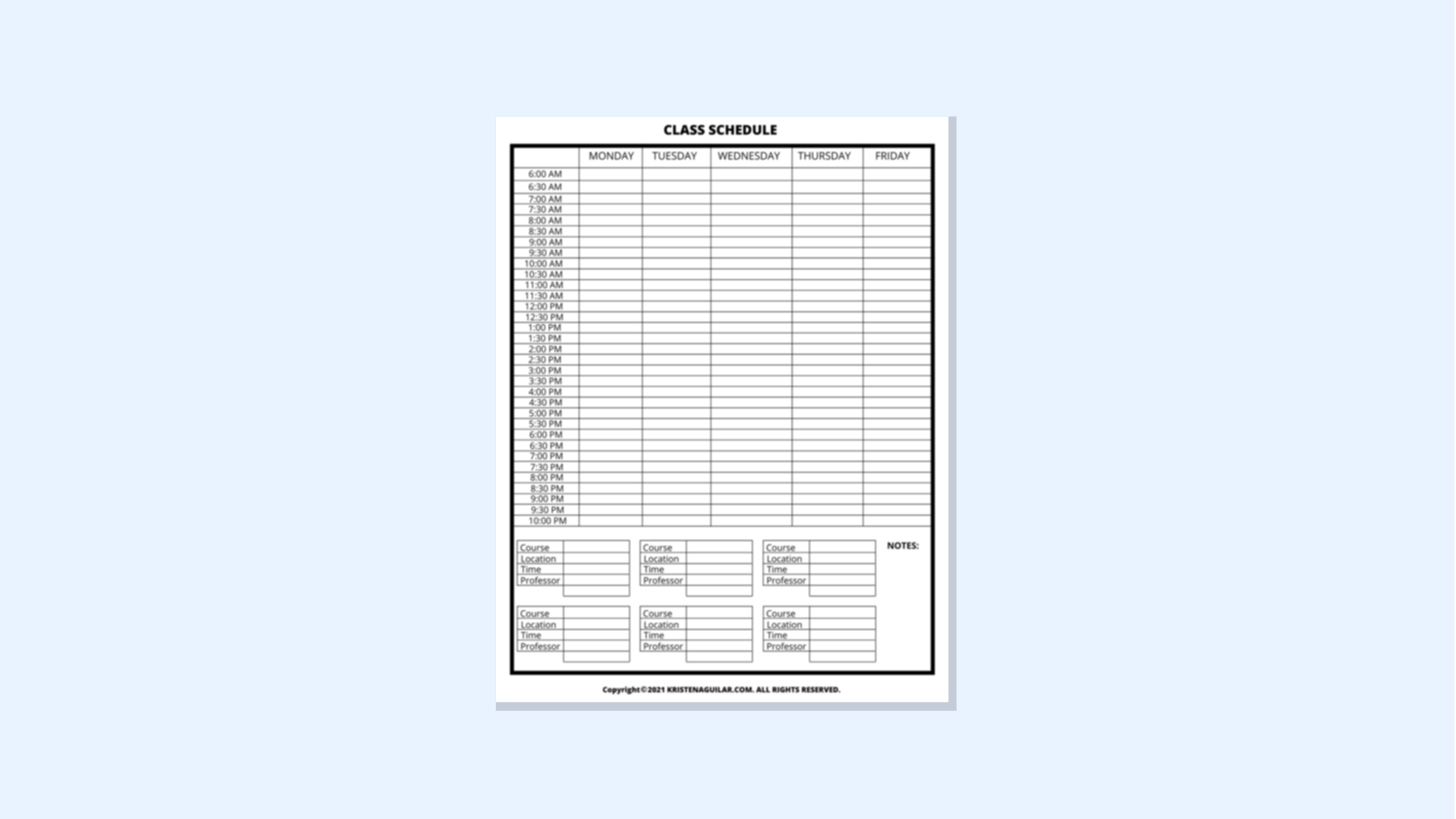Looking for ways to improve your memory and ace your next exam? This post is all about 4 insanely effective ways to improve your memory.
Let's be real: in college, it can be super easy to forget stuff.
Unless you have a rare condition known as hyperthymesia (also known as total recall memory), chances are, you cannot remember every day of your life with all it's details and nuances in vivid detail. This is especially true for college campus life, juggling work and school life, online learning or just about any other endeavor you pursue.
Dr. Melman's pop quiz on European Art History isn't the only thing you need to rummage through your memory banks to recall.
Your boyfriend (or girlfriend)'s favorite color, what you did last summer, and how many coats of paint it will take to repaint your favorite room are all things you need to remember. And don't even get me started on work projects, house projects or cooking skills to impress your bae's parents...
All this can require some aspect of your memory.
But let's get back to college textbooks since we haven't decided if the swatch for Eggshell Surprise would go better than the Teriyaki Winter. Or Evergreen Forest.
(Okay, I'm having way too much fun with paint right now.)
There are several different yet insanely effective hacks you can use to boost your memory skills and in this post we are going to tackle four of them in life-saving detail. Try them out and see which ones work best for you the next time you study.
This is a 3-part series so keep an eye out for more memory hacks you can use to crush it in college and in life.
Let's get started.
This post is all about effective ways to improve your memory.
WAYS TO IMPROVE YOUR MEMORY:
Use the SAVE Method
I'm calling the four principles of memory in this post the SAVE Method. You can use each of them when you are trying to learn something new; they can help you boost your memory efforts.
When I think of "save", I think of a lifeline...like a rescue or maybe even one of those circular flotation devices you may see on a boat or with a lifeguard.

You can break down the SAVE Method like this:
1. Selectivity
Selectivity is when you select bits of information out of an ocean of information.
Think of a textbook with chapters. The professor assigns chapters two through four for homework and says there will be a quiz on the material...
But they don't mean a quiz on every single word in those chapters.
Selectivity is the process of picking out main ideas or what you've identified as important details. Bold terms, italicized phrases, key dates and events that occurred or the people associated with those events: these are all examples of selectivity in action.
This memory booster requires sifting through chunks of data or words and information and then pinpointing with your mind which parts to remember. Supporting details, concepts, important ideas or details - these are all examples of things to remember for your academics.
Selectivity can look like:
- Deciding what to write in your notes
- Highlighting specific information in your textbook
- Avoiding unimportant or unessential information
- Avoiding cluttering your working memory banks
Happy tip: When you choose to intentionally use selectivity to boost your memory, you train your brain to pick out important information quickly and more efficiently find the main ideas and supporting information of any topic you choose.
2. Association
This memory booster requires you to link pictures or sounds together in an effort to process more than one item or blocks of information (kind of like mind-mapping with sounds or mental imagery).
Let's try this example. The goal is to match the next 3 jingles with their respective companies.
A) "Like a good neighbor..."
B) "We are farmers..."
C) "Every kiss begins with..."
(hint: scroll to the end to see of you guessed right.)
Hopefully, you've heard at least one of these jingles before and just the start of them again quickly brought back to your memory the company associated with the jingle.
Keep in mind catchy jingles are just one way to do this.
Other associations you can form can include phrases, familiar objects, personal experiences, mnemonics, familiar situations, numbers, pictures, and even your own mental meme or gifs about the topic.
For example, if someone says: Colonel Baefish sailed around the Cape in 1887.
[no, he didn't so don't add this to your quiz]
The pronunciation of Colonel in English sounds like a lot like "kernel" and kernels remind me of corn. "Baefish" reminds me of how I once dated a bae that didn't like fish. The Cape reminds me of South Africa and the 1887 reminds me of the jerseys of two of my favorite athletes growing up.
Popcorn has kernels and I'm getting hungry right now so...
I can make up my own association to "Colonel Baefish sailed around the Cape in 1887" (again, not true so please don't blame this creative example for the grade on your next quiz).
How? What about that time my ex-bae who doesn't like fish, ate around the popcorn kernels while I watched athletes #18 and #87 walk bases during a baseball game.
My brain then associates kernels with colonel, the bae who doesn't like fish with "baefish", the movement of sailing around with bae eating around the kernels and athletes walking bases [baseball] as well as specific jersey numbers to reinforce this faux fun fact that I now kind of wish was true. (not the ex-bae part though...no one needs extra ex baes).
Happy tip: You can do this same thing with real life scenarios, phrases you are familiar with, colors, smells and even with sounds and jingles. The idea is to form mind triggers or mental connectivity to help associate certain things you want to remember with things that you are already familiar with.
Association can help you:
- Connect new information with previously learned information
- Link sounds, pictures or even words together to strengthen ideas
- Create triggers or cues that are retrievable and easy to remember
- Create mental duos where the recall of one object automatically brings the recall of the other object back to the forefront of your memory
- Create easy to remember mnemonics or chains of association (like the Colonel Baefish example)
- Can help hold new information longer and encode it in ways unique to you
Associations are part of the cognitive process and, interestingly enough, a person's long-term memory often does really well with the individualized use of associations.
3. Visualization
This is where I remember exactly how an ex-bae ate popcorn kernels at the baseball game and how it relates to Colonel Baefish.
Just kidding. Sorta.
Visualization is a memory technique that involves moving pictures (AKA making movies) in your mind to reinforce what you are trying to remember. Since I'm actually not stuck on an ex-bae, to avoid confusion I'll flip the faux (yet fun) example of Colonel Baefish now to something different from here on out.
Visualization involves visual encoding which basically means you need to be able to "see" the pictures in your mind without looking at the information.
That favorite scene in your favorite movie? Yeah, cue that kind of visualization down to the HD details.
This method can be great for diagram memorization too.
Happy tip: While it might sound super complicated, practicing visualization is fairly simple. When you are trying to recall something, close you eyes and practice seeing that thing on the inside of your [still closed] eyelids.
Examples can include: A combination to a gym locker. How to make a certain entrée in a restaurant. What you do to clean a room or wipe off a sink. How to solve that complex math problem. How to diagram a complicated sentence. How to find Orion's belt in the night sky.
Visualization can help you:
- Process and store information visually
- Increase your visual memory skills
- Create cues that will help with long-term memory
- Clarify information and then record it in your mind like a moving picture
- Verbalize and recite more accurate details
- Create movies in your mind as you read to increase reading comprehension
- Link sounds, pictures or even words together to strengthen ideas
- Create triggers or cues that are retrievable and easy to remember
- Create mental duos where the recall of one object automatically brings the recall of the other object back to the forefront of your memory
- Create easy to remember mnemonics or chains of association (like the Colonel Baefish example)
- Can help hold new information longer and encode it in ways unique to you
Happy tip: This is also great for fiction book readers who love to visualize characters and their settings, unfolding details and any action that takes place.
Many study strategies use visualization to help boost overall recall but you can also use this for areas of personal growth. Imagine achieving those goals you are working toward, see yourself accomplishing them and enjoying the benefits...that's visualization in action.
4. Elaboration
Elaboration is the last one technique we will cover in this post, but it is certainly not the least. Also known as elaborative rehearsal, this involving thinking about and reflecting on information in new ways. This one is more challenging for some people to use at first when compared to the first three because it pushes beyond the swimming limits of rote memory.
Rote memory (pronounced like "wrote" memory) is the process of using learning information exactly as you see it after intentional repetition. Your best friend's address or your favorite coffee order is an example of rote memory.
Elaboration, however, involves digging deeper.

Elaboration can help you:
- Recognize how to apply information in new and effective ways
- Reinforce the how and why specific steps or processes are used
- Identify cause and effect, comparisons and contrasts
- Logically organize chunks of information for long-term memory
Happy tip: When you see the information in another form than the exact one you memorized, elaboration can keep you from getting lost, stuck or confused.
Here are some helpful questions you can use to kickstart your elaboration efforts.
- Why is this important?
- How can I use this?
- Can this apply to others situations and if so, how?
Elaboration is like taking information that was once presented at face-value and kicking it up a notch.
Ever wonder how a genius like Albert Einstein used to think? While elaboration may only scratch the surface, it's a good place to start.
That wraps up the last bit of what I like to nickname the SAVE method. I totally recommend trying out each of the following memory boosters: Selectivity, Association, Visualization and Elaboration [S-A-V-E] and find out which ones work best for you.
With these totally doable and incredibly effective ways to boost your memory, you are sure to handle your next study session like a pro and get the best grade possible.
Happy studying!
This post was all about effective ways to improve your memory.
Other posts you may like:

Get More Organized With This Free Class Schedule
RELATED IDEAS:


